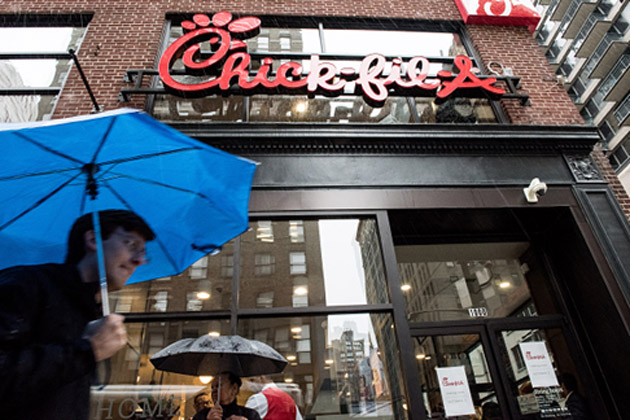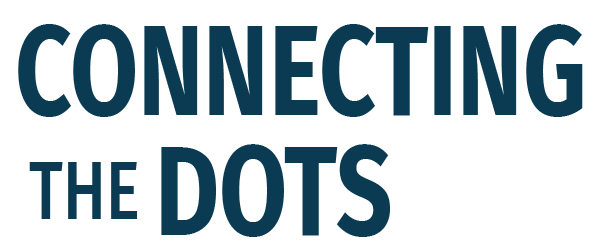
A Productivity Paradox
-
 Patrick Watson
Patrick Watson
- |
- April 17, 2018
- |
- Comments
Economics is the study of people’s rational choices when they’re faced with scarcity and uncertainty.
The problem: people aren’t rational. They often act against their own economic interests—or appear to. So we have behavioral economics to figure out why.
Now, you might think businesses are different since they focus on the bottom line, not vague feelings. Yet companies can act irrationally just like individuals do… and they may be even less likely to realize it, much less admit it.
That’s a shame because everyone might be better off if they did.

Photo: Getty Images
Regular Hours
Not so long ago, work was a daytime, Monday-through-Friday thing for most people. Now much of the US economy runs 24/7.
As a result, millions of workers have unpredictable schedules. This is especially common in retailing. Chain stores use algorithms to match staffing with store traffic.
On the surface, that makes sense. Why pay workers to stand around and do nothing? The shareholders expect management to maximize profits. If it’s hard on the workers, well, they can get another job.
Like what you're reading?
Get this free newsletter in your inbox regularly on Tuesdays! Read our privacy policy here.
But what if this hyper-precise scheduling is bad for the business too? One recent study says steady schedules can bring in more revenue.
University of California researchers worked with Gap stores in the Chicago and San Francisco areas to measure the impact of stable work schedules. Here’s how it worked, as reported in The New York Times:
The study randomly assigned about two-thirds of the stores to a so-called treatment group, in which managers were encouraged to provide workers with more consistent start and stop times from day to day, and more consistent schedules from week to week. Many managers were also authorized to slightly increase the total number of payroll hours that they could allocate to their workers. Scheduling at the remaining one-third of the stores continued largely as usual.
The result: The change in average sales during the experiment was 7 percent higher at the stores subject to the new policies than at the stores in the control group.
So, when managers let people work regular hours, sales rose 7%. Across a sizable company like Gap, that’s millions of dollars a month.
The study found much of the improvement came from reduced employee turnover. Stores with stabilized schedules had more experienced workers, who sold more products.
While it’s hard to measure every factor in a study like this, the results suggest something important: treating people as valuable members of the company, instead of as interchangeable parts, can bring better results.

Photo: Getty Images
Six Days a Week
For restaurants, then, there’s a direct connection between the hours they are open and the revenue they receive.
Or so you might think.
Consider Chick-fil-A, whose stores are closed on Sundays due to the founder’s religious beliefs. That turns out to be good business as well.
According to trade publication QSR, in 2016 the average Chick-fil-A brought in 73% more revenue in six days than the average McDonald’s did in seven days.
Nor is it just McDonald’s. Chick-fil-A sales were triple the average Wendy’s sales, again with one less day per week to do it.
Like what you're reading?
Get this free newsletter in your inbox regularly on Tuesdays! Read our privacy policy here.
Against vigorous competition, Chick-fil-A easily wins the revenue fight with one hand tied behind its back, so to speak.
One reason: Chick-fil-A seems to treat its staff well—not so much with higher wages, but opportunities for education and advancement.
But there’s something else, too: Chick-fil-A workers know they’ll always have Sundays off. I suspect it gives Chick-fil-A lower turnover and better-trained workers. They return the favor by going the extra mile to please customers. Revenue follows.
Could other chains do the same? Sure. Strong evidence says it would help productivity and sales. The rational move would be to copy Chick-fil-A’s practice. But they don’t, and some have even gone the other direction, expanding hours to stay open all night.

Photo: Getty Images
Paying Attention
You can probably guess my point. Treating workers as valuable assets instead of disposable tools isn’t just the right moral choice—it’s often the smart financial choice as well. Yet many employers irrationally choose not to.
This isn’t new information. In a now-famous 1920s experiment, Western Electric changed the lighting at its plant in Hawthorne, Illinois. It found making the room brighter improved productivity.
That makes sense, but then it got weird. They turned the lights down again, and productivity improved even more.
Western Electric also varied other employee benefits like break times. In each case, changes increased output. The effect faded with time, but something had obviously happened.
The conclusion: it wasn’t so much the changes, but that workers saw management paying attention to them. They worked more efficiently when they thought the company cared about their comfort. Imagine that.

Photo: Getty Images
Double Down on People
Today’s economists and central bankers know productivity is a problem, but they can’t seem to find a solution. Employers responded with measures like algorithmic scheduling in retail stores or all-night hours in fast food.
Like what you're reading?
Get this free newsletter in your inbox regularly on Tuesdays! Read our privacy policy here.
Maybe these changes raise productivity sometimes, but the aggregate economic data suggests they usually don’t—at least not anymore.
The next idea: robots and AI. Reduce or even eliminate those pesky humans.
But if the Gap experiment and Chick-fil-A’s success mean anything, doubling down on humans might cost less and work even better.
It’s something to consider if you own a business. And you don’t need the Fed’s help to do it.
See you at the top,

Patrick Watson
P.S. If you’re reading this because someone shared it with you, click here to get your own free Connecting the Dots subscription. You can also follow me on Twitter: @PatrickW.
P.S. If you like my letters, you’ll love reading Over My Shoulder with serious economic analysis from my global network, at a surprisingly affordable price. Click here to learn more.

 Patrick Watson
Patrick Watson
